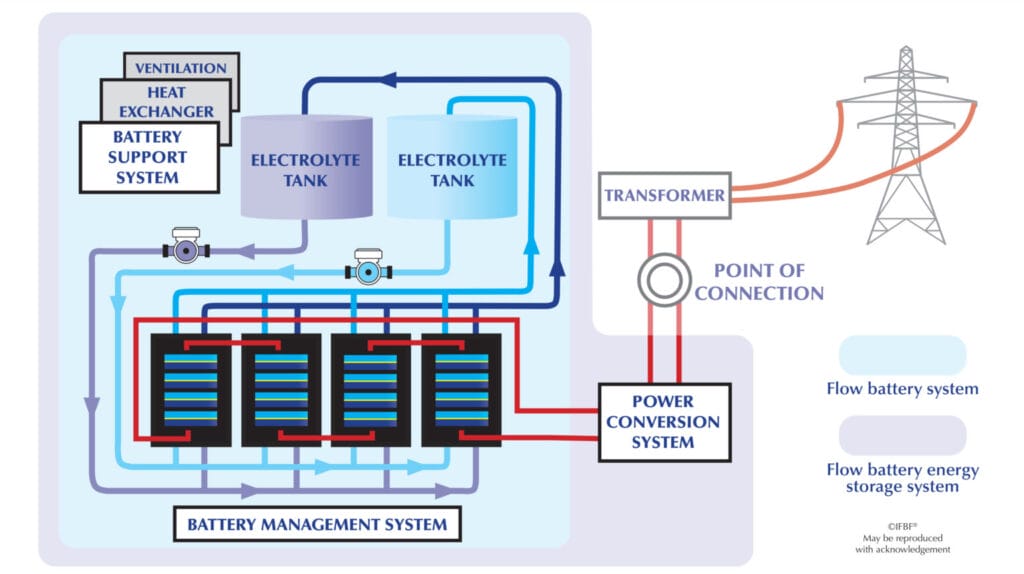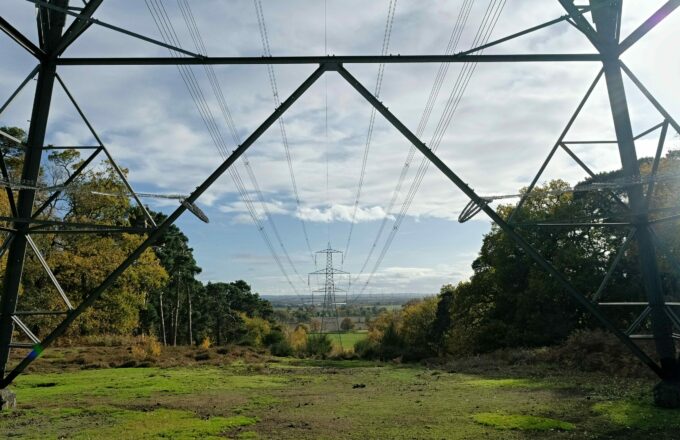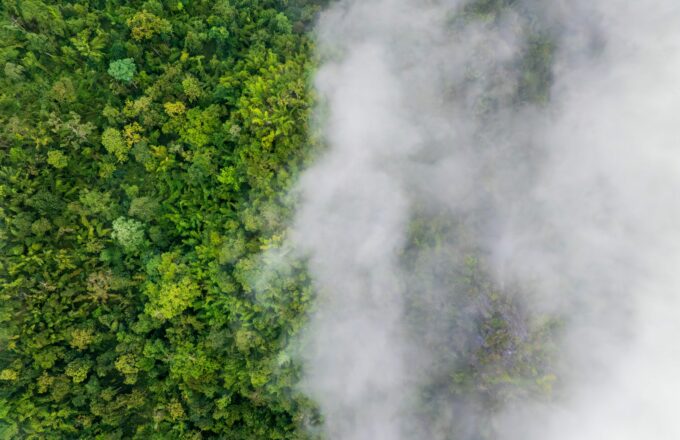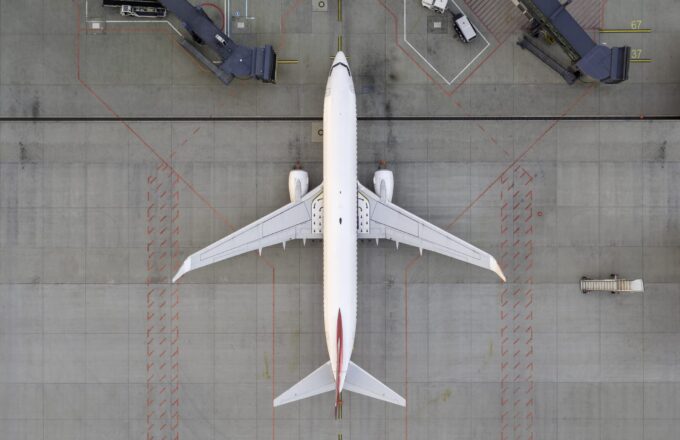Australia could be a leader in flow batteries – the future of renewable energy storage?

Flow batteries have been around since 1879, when they were first patented in the USA. Since then, they have powered everything from satellites to early electric cars. But Australia could be a world leader in making them the go-to technology for industrial-scale storage of renewable energy, according to Maria Skyllas-Kazacos at University of New South Wales.
She is professor emeritus at the university’s school of chemical engineering and argues in a Guardian article that: ‘Flow batteries are currently the cheapest way to store electricity for longer durations (over eight hours). Unlike lithium-ion batteries, flow batteries can run for tens of thousands of cycles and the electrolyte can last much longer – or even indefinitely.’
Flow batteries can feed energy back to the grid for up to 12 hours – much longer than lithium-ion batteries, which only last four to six hours. Image courtesy the International Flow Battery Forum (IFBF).
Unlike lithium batteries, which store energy in their electrodes, flow batteries store power in their liquid electrolytes. Electrolyte solutions are stored in external tanks and pumped through a reactor, where chemical reactions take place at inert electrodes to produce energy. To add storage, simply increase the volume of electrolytes in the tanks, rather than adding more battery packs.
With increased storage capacity, the cost per kWh of stored energy decreases dramatically, Professor Skyllas-Kazacos claims.
National battery strategy
The Australian government has launched an AUS$500 million battery strategy to expand domestic manufacturing of batteries, including flow batteries.
The professor and her university colleagues have been actively involved since the 1980ss in the development of vanadium redox flow batteries, which are now being commercially produced in Japan, China and Europe, with several GWh worth of capacity now installed globally.
China, the world’s largest vanadium producer, has recently approved many large new vanadium flow battery projects, including the world’s largest installation in Dalian, with 175MW capacity and 700MWh of storage.
Australia’s first megawatt-scale vanadium flow battery was installed to store solar energy in 2023, and the government has fast-tracked several new vanadium mines and processing plants. Australia could become a major global vanadium producer in the future, says Professor Skyllas-Kazacos.
Australia is also developing flow batteries with a range of other technologies, including iron and zinc-bromide.
The professor concludes: ‘Flow batteries have long required time-consuming and expensive manual assembly. But it’s now possible to automate assembly lines, which will cut costs and make Australian-made batteries better able to compete.
‘Within a decade, Australia could become a globally competitive battery maker and exporter of critical minerals.’
Learn more

- Article
- Industry News
UK National Grid chief warns of need for planning changes

- Article
- Industry News
Malasia publishes National Energy Transition Roadmap (NETR)

- Automatic Voltage Control (AVC/AVR)
- Industry News
- Tapchanger Services
Heathrow disaster is a reminder to keep HV assets in good shape

- Article
- Industry News